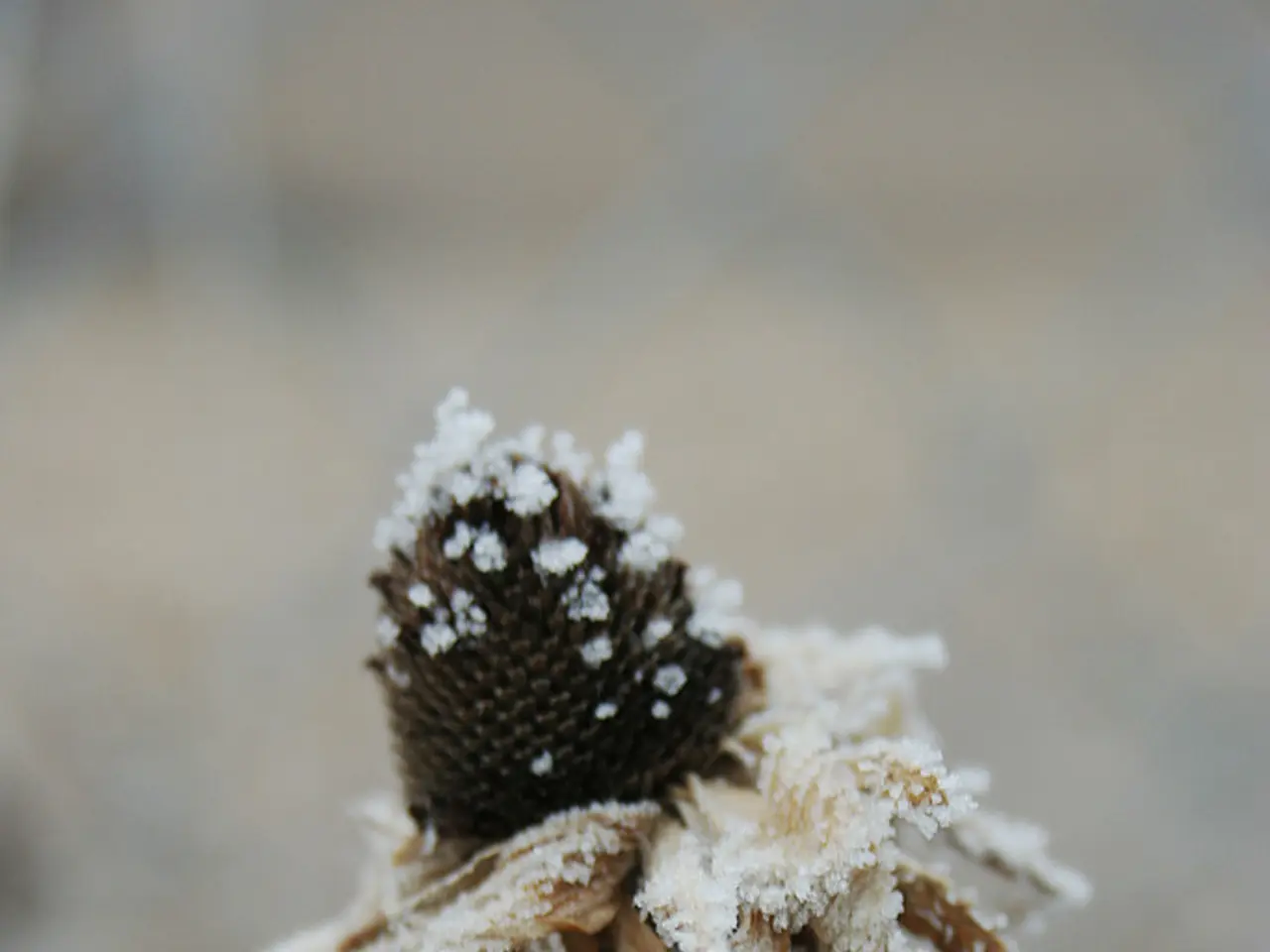Underground Battles of Snake Plants: Decoding Leaf Texture Indications
Snake Plant Tales and Tribulations
Your snake plant's leaves might be telling a story of struggles, but fear not! Reading between the lines of these leafy texts can help you save your sickly green companion and assist it in flourishing.
1. A Touch of Silk
When your snake plant sports smooth, firm, and slightly shiny leaves, rejoice! Its roots are appropriately absorbing water and nutrients, and the soil moisture balance is on point. Everything underneath is working perfectly, so no changes are needed! Keep doing what you're doing!
2. Creased and Limp
If your snake plant's leaves droop just a little or appear slightly folded at the tips, they're merely thirsty. Roots that can't find enough water cause leakage in the leaves, making them floppy. To quench your plant's thirst, water deeply and maintain a regular watering schedule. Drainage is also crucial to avoid keeping the roots permanently wet.
3. Soggy and Mushy
Soft, mushy, or squishy leaves are a wake-up call. They usually signal an overflow of water, leading to the potential rot of the roots. This can happen due to poor drainage or overwatering. When roots rot, they can no longer supply the plant with what it needs. You may need to repot your plant, trim away any rotten roots, and make sure the new soil is well-draining.
4. Crunchy and Crispy
If your snake plant's leaves feel dry and brittle, check for more than a lack of water. Possible culprits can be too much sun, insufficient watering, or roots poorly in contact with the soil. Look over your plant placement, water it adequately, and make sure the soil isn't too dry or too loose.
5. Weak and Spindly
If your plant's leaves are thin and floppy, it might suffer from a lack of nutrients, root congestion in the pot, or poorly nourished soil. Giving your plant fresh soil, room to grow, and a bit of light plant fertilizer can help it regain strength.
6. Curling Corners
When the edges of the leaves curl up or tuck under, your plant may be stressed out. This could result from salty soil or inconsistent watering, causing feeding difficulties for the roots. Flushing the soil with clean water and maintaining a regular watering schedule should help it unclude.
7. Brown Blemishes
Brown patches on the leaves can indicate damage to the roots from pests, root rot, or rough handling during repotting. The plant remembers the trauma and reflects it through these patches. New growth should look better, but take steps to prevent these problems in the future.
8. Broken and Torn Particles
If your snake plant shows signs of chewed or torn leaves, it may have fallen prey to pests or been physically damaged. Pests may target the new growth, creating ragged holes or open areas. Physical damage can also occur from rough handling or nearby objects rubbing the leaves. These wounds won't heal, but they won't spread either. Keep an eye out for persistent threats and remove them.
9. Sticky Situation
Sometimes, the soil may feel sticky or shiny on top. This could mean pests are feasting close to the roots. Check for signs of pests, even if they're hard to spot, as they can harm the plant. Clean the area thoroughly and keep a watch for healthy roots.
10. Pale Pallor
Pale or washed-out leaves indicate possible nutrient deficiencies, root congestion, or post-repotting stress. Fresh soil, a bit of fertilizer, and good lighting should help the color return.
11. Fading Hues
If your snake plant's leaves yellow from the tip down and soften at the base, this is usually a warning that the plant's roots are drowning or stressed due to overwatering or poor drainage. Adjust your watering routine and check the soil for improvements.
12. Twisted Tales
Twisted leaves are a sign of environmental stress due to sudden temperature shifts or drafty spots. For better root establishment and growth, provide the plant with a stable environment and check for potential root damage.
13. Sagging Sprigs
If your plant's leaves suddenly droop or lean instead of standing upright, it could be a sign of root stress. Allow the plant time to stabilize and adjust its care routine.
14. Collapsed Leaves
When a player's leaves fold completely and appear lifeless, it's usually a sign of dead or broken roots. Tackle the root or some of the plant's pups may help it have another shot at life.
Knowing your snake plant by touching its leaves is like reading an open book. With the right care, you can solve your snake plant's problems before they worsen and help it thrive.
Enrichment Data:- Common Leaf Textures and Problems 1. Wrinkled Leaves - Causes: Low humidity, underwatering, or overwatering. - Solutions: Increase humidity; adjust watering schedule.
- Soft and Mushy Leaves
- Causes: Overwatering, leading to root rot.
- Solutions: Remove affected leaves, repot, and ensure new soil is well-draining.
- Distorted or Irregular Leaves
- Causes: Pests, mites, insects, thrips, or fungal infections.
- Solutions: Inspect for pests and treat with appropriate oils; for fungal infections, prune affected areas or use organic fungicides.
- Brown Tips or Patches
- Causes: Physical damage, extreme temperatures, or overexposure to sunlight.
- Solutions: Remove damaged leaves; avoid exposing plant to extreme temperatures or direct sunlight.
- General Care Tips
- Lighting: Ensure the plant receives appropriate light, avoiding exposure to direct sunlight, which can cause the leaves to burn.
- Watering: Maintain a consistent watering schedule and avoid overwatering, ensuring the soil drains well.
- Humidity: Provide adequate humidity levels to prevent water loss from the leaves, typically by placing the plant on a tray with water or misting the leaves regularly.
- Partaking in some home-and-garden activities, especially gardening, can help you learn the feel of your snake plant's leaves and understand their status.
- During gardening tasks or home-and-garden projects, assessing the texture of your snake plant's leaves can provide crucial insights, allowing you to address potential issues and improve its lifestyle.








